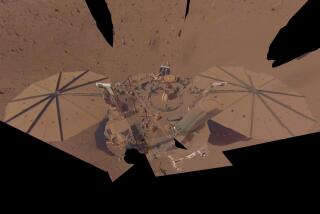Salt of the Earth, linked to Mars
Site: Lake Brown in Australia, about 300 miles east of Perth.
Why is it so special? In southern Australia, millions of years of continental weathering and arid desert conditions have created super-salty, acidic lakes. The water is as much as eight times saltier than the ocean. There’s no other place like this known on Earth. Comparable areas may include the acid salt lakes believed to have existed in the central United States about 300 million years ago, or formations on Mars.
What’s the Mars connection? The lake contains salt minerals, iron oxide concretions and sulfates that include the rare mineral jarosite -- a suite of materials not often found together. They’ve recently been found on the surface of Mars where NASA’s rovers have been acting as field geologists, analyzing the layered rocks of the Red Planet. There’s evidence that the environment where these Mars rocks were deposited was very much like Lake Brown.
Is there life in the lake? Not life you can see. One might think acidic and salty conditions would not be hospitable to life, but new evidence suggests that these extreme environments are actually teeming with microorganisms. Researchers believe that microorganisms in acid saline environments might get trapped in the salt crystals that are forming and that these organisms could survive within the minerals for millions of years. Some of these organisms give the minerals their bright color (right).
-- Brenda Beitler Bowen
Bowen is a geology researcher at Central Michigan University.




